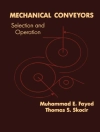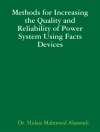- Comprehensive review of the development of plant phenotyping as a research field in a wide range of scientific communities
- Explores key advances in the use of plant phenotyping techniques to improve yield, growth and resource-use efficiency, such as robotics, aerial systems, sensors and controlled environments
- Offers a detailed analysis of the benefits of plant phenotyping through selected case studies that demonstrate the use of phenotyping techniques in analysing crop functionality and improving crop responses to abiotic and biotic stresses
สารบัญ
Part 1 The development of phenotyping as a research field
1.Origins and drivers of crop phenotyping: Roland Pieruschka and Ulrich Schurr, Institute for Bio- and Geosciences (IBG), IBG-2: Plant Sciences, Forschungszentrum Jülich, Germany;
2.The evolution of trait selection in breeding: from seeing to remote sensing: Matthew Reynolds, Francisco Pinto, Liana Acevedo, Francisco J. Pinera-Chavez, and Carolina Rivera-Amado, International Maize and Wheat Improvement Center (CIMMYT), Mexico;
Part 2 Sensor types
3.Advances in optical analysis for crop phenotyping: Jian Jin and Tanzeel U. Rehman, Purdue University, USA; and Qin Zhang, Washington State University, USA;
4.Advances in the use of thermography in crop phenotyping: David M. Deery, CSIRO Agriculture and Food, Australia;
5.Advances in the use of X-ray computed tomography in crop phenotyping: Stefan Gerth, Norman Uhlmann and Michael Salamon, Fraunhofer EZRT, Germany;
Part 3 Carrier/delivery systems
6.Field robots for plant phenotyping: Rick van de Zedde, Wageningen University and Research, The Netherlands; and Lili Yao, Visiting Researcher – Wageningen University and Research, The Netherlands;
7.Advances in the use of aerial systems/UAVs for crop phenotyping as examples for lean, low-cost, high-throughput field crop phenotyping systems: Helge Aasen, Institute of Agricultural Sciences, ETH Zurich and Remote Sensing Team, Division of Agroecology and Environment, Agroscope, Switzerland; and Lukas Roth, Institute of Agricultural Sciences, ETH Zurich, Switzerland;
Part 4 Data analysis
8.Meeting computer vision and machine learning challenges in crop phenotyping: Hanno Scharr, Institute of Bio- and Geosciences: Plant Sciences (IBG-2) and Institute for Advanced Simulation: Data Analytics and Machine Learning (IAS-8), Forschungszentrum Jülich, Germany; and Sotirios A. Tsaftaris, The University of Edinburgh and Alan Turing Institute, UK;
9.Digital phenotyping and genotype-to-phenotype (G2P) models to predict complex traits in cereal crops: Nicolas Virlet, Rothamsted Research, UK; Danilo H. Lyra, Biometrics and Breeding Research, BASF, Belgium; and Malcolm J. Hawkesford, Rothamsted Research, UK;
10.The role of crop growth models in crop improvement: integrating phenomics, envirotyping and genomic prediction: Jana Kholová, International Crops Research Institute for the Semi-Arid Tropics (ICRISAT), India; Amir Hajjarpoor, UMR DIADE, Université de Montpellier, Institut de Recherche pour le Développement (IRD), France; Vincent Garin, International Crops Research Institute for the Semi-Arid Tropics (ICRISAT), Mali; William Nelson, Gottingen University, Germany; Madina Diacoumba, International Crops Research Institute for the Semi-Arid Tropics (ICRISAT), Mali; Carlos D. Messina, Pioneer Hi-Bred International, USA; Graeme L. Hammer, Queensland Alliance for Agriculture and Food Innovation – The University of Queensland, Australia; Yunbi Xu, Chinese Academy of Agricultural Sciences, China and International Maize and Wheat Improvement Center (CIMMYT), Mexico; Milan O. Urban, International Center for Tropical Agriculture (CIAT), Colombia; and Jan Jarolímek, Czech University of Life Sciences (CZU), Czech Republic;
Part 5 Case studies
11.Using phenotyping techniques to analyse crop functionality and photosynthesis: Eva Rosenqvist, University of Copenhagen, Denmark;
12.Using phenotyping techniques to predict and model grain yield: translating phenotyping into genetic gain: Thomas Vatter and José L. Araus, University of Barcelona and AGROTECNIO (Center for Research in Agrotechnology), Spain;
13.Automated assessment of plant diseases and traits by sensors: how can digital technologies support smart farming and plant breeding?: Anne-Katrin Mahlein, Institute of Sugar Beet Research, Germany; Jan Behmann, Bayer Crop Science, Germany; David Bohnenkamp, BASF Digital Farming Gmb H, Germany; René H. J. Heim, UAV Research Centre (URC), Ghent University, Belgium; and Sebastian Streit and Stefan Paulus, Institute of Sugar Beet Research, Germany;
เกี่ยวกับผู้แต่ง
Professor Malcolm Hawkesford is head of the Plant Sciences Department at Rothamsted Research and leads the Institutes contribution to the UK Designing Future Wheat strategic research programme. He is a Honorary Professor in Plant Sciences in the School of Biosciences, University of Nottingham. He is an investigator on multiple international programmes with Brazil and India, is a lead investigator in the Defra-funded Wheat Genetic Improvement Network, participates in multiple BBSRC-funded projects aimed at optimizing resource use in wheat and is the lead scientist for major wheat GMO field experiments at Rothamsted. He is chair of the Nutrient Use Efficiency Expert Working Group of the International Wheat Initiative.












